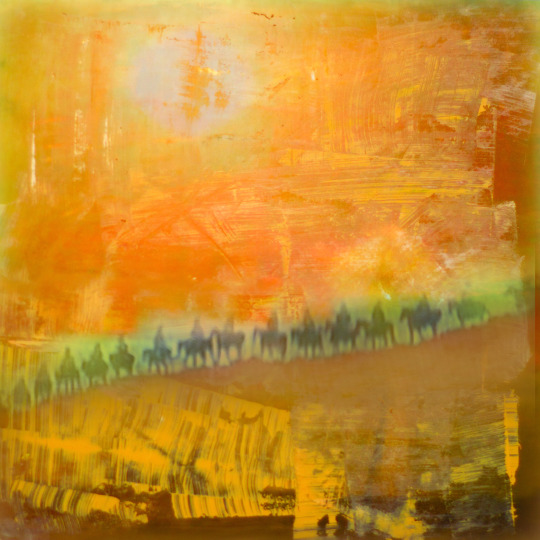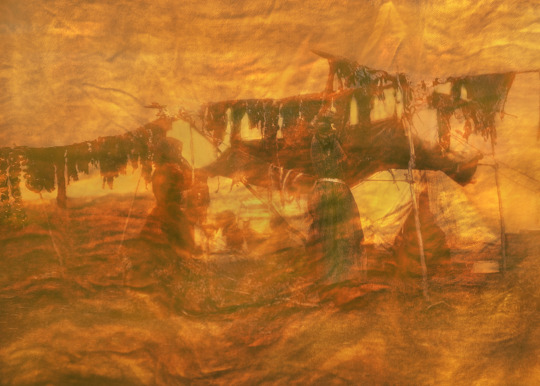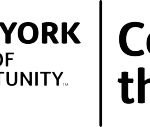Artist Book Release: Butterfly Against the Wind
“Makxa Sitomni (mahkah-see- toe-mnee) – a medicine in a way that describes how one should hold and care for the universe within one’s arms.” – Tiokasin Ghosthorse
Visual artist Jadina Lilien collaborates with activist, musician, and lecturer Tiokasin Ghosthorse on their upcoming book, Butterfly Against the Wind. In this collaborative project, the reader is transported to the land of the Lakota, experiencing life on the plains today, while simultaneously remembering the history of the land and its people. The words and images go beyond the literal story of the Lakota, to the mystical reality where there is no beginning or end. Jadina Lilien and Tiokasin Ghosthorse share their insights and work with NYFA Current.
NYFA: Butterfly Against the Wind combines your images with Tiokasin Ghosthorse’s text. What was your collaboration process like? Did you create the text and images independently?
JADINA LILIEN: This book and exhibition project began with meeting Tiokasin Ghosthorse, from the Lakota Nation, at a cafe in New York City. After listening to the story of his life, I went to South Dakota where he was born. As I wrote in the book, my feeling from being on the land was one of contradictions. [I] remembered a time, one that is still possible, when everything was alive in a sacred way. From a mixture of grief and inspiration the art was created. Tiokasin talks about the many dimensions seen and unseen and how everything is connected to the land. These ideas were familiar to me, not in the way of the Lakota, but in a mystical and artistic way of understanding. My artwork is a process of communication with the many layers of reality. Tiokasin created the words while I did the visuals, and we put them together afterwards.
NYFA: You stated that Butterfly Against the Wind was “created to give the cosmology and sacred view of the Lakota.” What is your connection to the Lakota tribe? What suggestions can you give to other artists who are interested in working with and learning more about Native American history?
JL: My connection to the Lakota is through the heart. Also, I live on this land called America, which is cared for by the Native Nations and their ancestors. Tiokasin will tell you more about himself.
TIOKASIN GHOSTHORSE: I’m a member of the Cheyenne River Lakota Nation of South Dakota and the bands of Itazipco/Mnicoujou and Oglala. Through writing, music, and activism I’ve been engaging people with the ways of Grandmother Earth through Original Nations all my life. The Lakota Nation’s relative view to the natural elements such as the wind, the stars, and those that live within the movements, also create language, which I attempt to communicate through my words printed in Butterfly Against the Wind.
This question you ask about the history reminds me of a quote from John F. Kennedy: “For a subject worked and reworked so often in novels, motion pictures, and television, American Indians remain probably the least understood and most misunderstood Americans of us all.”
You won’t find much history in the mainstream because Native history is best understood starting from 1492 to the present. And that beginning is distorted in the books. But starting from the past you will know how Native ‘Americans’ see their roles in today’s society. It has been dismissed for many centuries but has a great impact on all of us living here—as we see today with the 100 or more Indian Nations gathered at the site called Sacred Stone Camp to protect the Water with prayer and peace, to stop an access pipeline from being constructed under the Missouri River.

NYFA: Your process in the studio relies on photography, painting, and many layers. How did you come to this method?
JL: The process I work with holds my attention. It is a living symbol of the many layers of reality, which is infinite. The mystery of what is real is hidden but expressed everywhere. This work is my attempt to have a relationship with the hide-and-seek of this secret: untangling the chaos to create beauty.
NYFA: How does your multi-disciplinary training in theatre, painting, and photography influence your practice?
JL: It’s always in hindsight where we understand the meaning of our lives, the story.
What connects all these creative disciplines is the story of creativity. Everything in life exists because of the process of creation from potential. As women we know from giving birth how extraordinary and magical it is to bring into form something that initially has no form. My artwork in the book tells the story behind the story.
My style and workspace begin with chaos, and hopefully I create something from it. It’s a ceremony. A celebration of what is wild. In the book Tiokasin writes “When humans no longer appreciate Mother Earth, when there are more domesticated animals than wild animals, then Mother Earth will begin to hide her secrets…” This is my way of recognizing the undomesticated and keeping it alive.
NYFA: Jadina, you included an ‘Additional Education’ section on your CV, reminding me that the education of an artist occurs in the world at large. What do you think about the state of art education today?
JL: Education outside the system is where what is learned comes alive. Tiokasin says don’t educate the wisdom out of yourself. There is a place for institutions, but the education happens outside of them. The trick is how to unwind what has been taught. And because we are trained by the system starting at the age of 5, this is not easy. “Down they forgot, as up they grew,” in the words of E.E. Cummings.

NYFA: Jadina, in 2013 you received a NYSCA/NYFA Artist Fellowship in Playwriting/Screenwriting. What was the impact of this award on your practice?
JL: The impact of the Fellowship was important. Being seen for one’s work at any level, by one person or many, helps the inspiration to continue and move forward. The screenplay Fellowship that I received from NYFA was about Tiokasin’s life before and after boarding school. The script is still being revised and looked at by independent directors. It’s not easy for films to get made here in the states on Native history.
NYFA: Why was NYFA Fiscal Sponsorship the fundraising vehicle you chose for your book, Butterfly Against the Wind? How did you build a coalition of supporters?
JL: I chose to apply for fiscal sponsorship through NYFA because their support to artists, and also activists, is generous. Building supporters for the project was easy with the connection to NYFA and Tiokasin’s work with the Native Arts and Cultures Foundation. Also, the combination of my work and Tiokasin’s is well-received because there is a need in the world today to create bridges between differences. People are attracted to what connects, rather than what disconnects.
Like Butterfly Against the Wind on Facebook! You can see Jadina Lilien’s work on her website and learn about Tiokasin Ghosthorse’s practice here. Tax-deductible contributions for printing and other publication expenses for Butterfly Against the Wind can be made here.
Interested in NYFA Fiscal Sponsorship for your latest creative idea? We have free quarterly application deadlines, click here to learn more!
The NYSCA/NYFA Artist Fellowship Program awards $7,000 grants to individual artists living and working in New York State. This year marks the 30th anniversary of the program, and NYFA is celebrating with events and online content. Be sure to follow NYFA on Twitter and Facebook for the latest updates.
– Interview by Madeleine Cutrona, Program Assistant Fiscal Sponsorship & Finance
Images, from top: Jadina Lilien (Sponsored Project), The Medicine Wheel, I Instead of We, With the Wind. All images are from Butterfly Against the Wind. Mixed media with graphite and oil. Limited edition prints also available.





